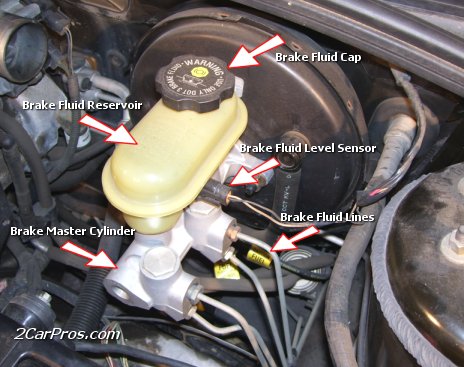Bubbling Noises
Car Makes Bubbling Noises
Helpful Information
Many bubbling noises are created when air is trapped inside a liquid container such as the heater core. If air is not allowed to exit a system, fluid will trap air causing a bubbling noise. Also, depending on the system in question, air can impair the operation of that system.
Best Practices
- Bubble noises are usually caused by service neglect, to avoid these problems regular maintenance is required.
Step by step repair guide on how to fix automotive bubble noises. This article pertains to all cars.
Difficulty Scale: 3 of 10
Tools and Supplies Needed
Begin with the vehicle on level ground, in park with the emergency brake on.
Step 1 - Air can get trapped inside of the brake system due to a leaking brake master, wheel cylinder, brake flex line, caliper or other components such as an ABS controller or proportioning valve. When this condition occurs it can cause bubble sounds when the brake pedal is depressed. To check for this condition check the brake fluid level inside the master cylinder by removing the master cylinder brake fluid cap. If the fluid level is low it can allow air to be forced inside the system producing the bubble like noise. To repair this problem refill the brake fluid and inspect system for leaks or wear. If any leaks exist repair as needed and bleed the brake system. Visit - Brake system bleed

Brake Master Cylinder
Step 2 - The radiator removes heat from the coolant by forcing air through the radiator fins. Without coolant your engine will over heat and if left unattended severe engine damage will occur. When an engine overheats it can force coolant into the overflow container which can create a bubbling sound. Never check the coolant level until the engine has cooled completely. If the engine is not overheating, air can be trapped or CO2 (exhaust gas) can cause bubbles in the cooling system. Complications from these bubbles can include: overheating, thermostat operation malfunction and coolant displacement.
Due to the design of the cooling system air is sometimes naturally trapped inside the system so look for a “bleeder” screw on the cooling system components such as the thermostat housing. Sometimes it can take several cycles of the system of being hot and cold before air is completely displaced. If once the cooling system has been purged of air the air bubbles return it could be a sign that the head gasket or other engine components have failed. When a CO2 leak first develops it may or may not cause the engine to overheat. Visit - Engine overheat

Radiator Cap and Coolant Reservoir
Step 3 - Air in the heater core can be caused by excessive coolant volume being pushed through the core. The heater core is design to have a "restricted" coolant flow to minimize bubbling. To repair this condition a flow re-stricter must be installed on either the core input or outlet hose.
Step 4 - Some standard transmission car manufacturers use a hydraulic actuation system much like a brake system. A clutch system can exhibit the same bubble noises for the same reason as a brake system. Check the fluid level of the clutch master cylinder. If the master cylinder is low it will cause the system to take in air causing a bubble sound while pressing the clutch pedal down. If the fluid level is down its because the system is leaking or the clutch disc is worn.
Step 5 - The power steering system utilizes hydraulic pressure which is produced by the power steering pump. If the fluid level is low, it can pull air into the system causing a whining noise due to the air bubbles in the system. Check the power steering fluid level by locating the power steering fluid reservoir and remove the cap (twist counter clockwise). If the fluid level is down or there is no fluid in the reservoir the system has a leak. Inspect the entire power steering system: pump, hoses and rack and pinion or box assembly, replace worn or broken components as needed. Refill system with manufacturers recommended fluids. Allow system to stand for a period of time to allow air (aeration) to dissipate.

Power Steering Cap
Step 6 - An automatic transmission functions by automatically changing the gear ratios while determining the speed and load of the engine. If the transmission is low on fluid due to a leak or service it will cause the transmission to scavenge fluid while taking in air. This air in the fluid can cause a bubbling noise when the dipstick is removed. Add transmission fluid as needed to obtain the correct level or service the transmission.

Locate and Remove the Transmission Fluid Level Indicator
- Flashlight
- Protective eyewear and gloves
- Appropriate fluids
Begin with the vehicle on level ground, in park with the emergency brake on.

Brake Master Cylinder

Radiator Cap and Coolant Reservoir

Power Steering Cap

Locate and Remove the Transmission Fluid Level Indicator
Comments
Post a Comment